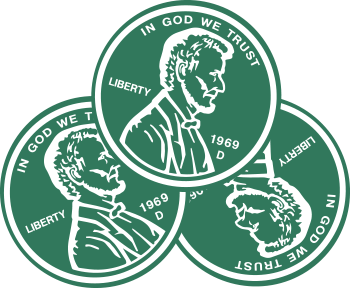
OUR TAXES
GOOD NEWS, BAD NEWS
Wyoming charges very low (or no) taxes on products, property, and services compared to other states. It has no individual or corporate income tax, and a host of exemptions for non-mineral businesses.
Depending on the year, about half of the State budget is supported by taxes paid by the minerals industry, with another 20-30 percent paid for with earnings from savings (investments) set aside during mineral booms of the past. This means the state budget relies on the mineral industry, in one way or another, for 60-80 percent of its revenue.
Most Wyoming households receive a wealth of state services for every dollar they contribute.
Calculate your tax-to-services ratio here
The Cowboy Family dashboard is courtesy of the Wyoming Taxpayers Association
Everyone loves low taxes! For 50 years, Wyoming citizens and non-mineral businesses have enjoyed very low tax rates, because taxes on coal, oil, and natural gas have heavily supported state, county, and town services, including local school districts.
But fossil fuel tax revenues are highly unstable. Coal revenues, once a predictable mainstay, are projected to keep declining. Oil and gas are subject to volatile market shifts. We can protect Wyoming’s future by considering ways for more of us to pay our fair share.
PROPERTY TAX: Supporting Counties, Towns, and Education
- Property taxes (from industries, businesses, and homeowners) are how we pay for K-12 education, local infrastructure, and town & county services. Locally approved, property taxes also support special districts and community colleges in counties that host them. Property tax enables us to educate our future leaders and keep our communities livable.
- Residential and most non-mineral business property in Wyoming is assessed at 9.5% of fair market value (FMV). This means you are taxed on less than 10% of your home's value.
- Recent increases in the amount of property tax homeowners pay mainly comes from buyers (many of them moving to Wyoming during the Covid pandemic) being willing to pay higher prices for property. Although tax rates remained low, high purchase prices caused fair market values to rise sharply, which resulted in higher taxes. The Legislature has created many forms of property tax relief. Speak with your County Treasurer or Assessor to learn more about your property tax. A list describing each program can be found here.
- Due mostly to relief measures, Residential Property values have decreased to about 2022 levels - down 20 to 25% in most counties. See this graph for 2000-2025 value changes in all categories of taxed property.
- Mineral ad valorem tax is a type of property tax paid to the county on 100% of the market value of the produced oil, coal, gas, or other mineral resource. Like severance tax, ad valorem revenues go up and down with market demand. Mineral industries also pay property tax on owned land and business equipment. About half of Wyoming's 23 counties have significant mineral wealth.
- Property tax in a nutshell 2-page PDF
OTHER TAXES
Fuel Tax: Buyers of gas and diesel in Wyoming pay a tax of $0.24/gallon. This includes a $0.01 tax to fund environmental clean-up costs for leaking underground storage tanks. The rest goes to the state’s Highway Fund, and matches federal funds to pay for roads and infrastructure. The current national average fuel tax is $.36/gallon.
Alcohol Excise Tax: Wyoming taxes $0.02/gal on Malt Beverages, $0.28/gal on Wine, and $0.94/gal on Spirits. Alcohol taxes make up a very small amount of our state’s general fund and reserve account to pay for general government services.
Tobacco and Nicotine Excise Tax: Cigarettes are taxed at $0.60 per pack, and other nicotine products, including e-cigarettes, are taxed 15-20% of wholesale purchase price. Wyoming also taxes moist snuff at $0.60 per oz. Though some revenue from nicotine and tobacco go to the state’s general fund for general services, most revenue goes back to the community.
Lodging Tax: The 5% lodging tax is Wyoming’s most recently implemented statewide tax. After January 1, 2021, towns and counties receive 2% of those lodging tax revenues for local use and the remaining 3% goes to the state to grow Wyoming tourism. A county may charge an additional 2% if local voters approve, for a maximum lodging tax of 7%.
The State of Wyoming shares about 30% of its sales tax revenues, and smaller percentages of its fuel and severance tax revenues, to support operations of counties and towns. See pages 13-17 in the Wyoming County Commissioners Association Revenue Estimating Manual.
Twice a year, local governments also receive a “direct distribution” from the state, based on a formula linked to population, local sales tax revenues, and other considerations. The formula is reviewed and voted on by the Legislature each budget session.
In 2024, these direct distributions ranged from about $102,900 to $4.5 million, depending on the county. (See page 17 in the WCCA Revenue Estimating Manual mentioned above).
Due to state laws limiting local tax options, many towns and counties in Wyoming rely heavily on direct distribution to balance their budgets.
A thriving Wyoming provides high-quality, consistent public services like education, health care, and infrastructure well into the future. It’s the best way to keep our young people and our communities close and connected.


